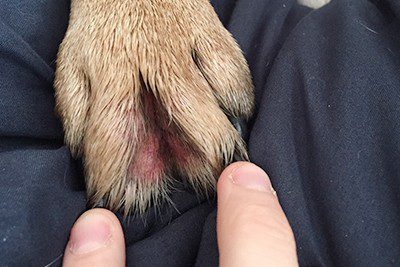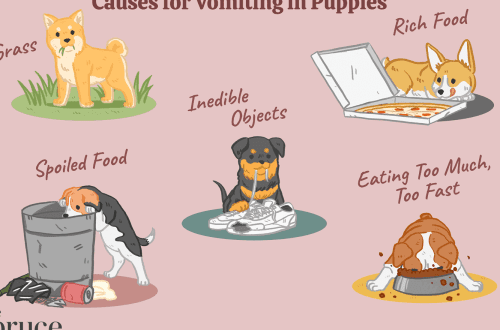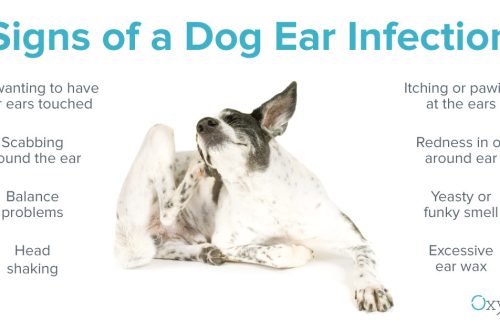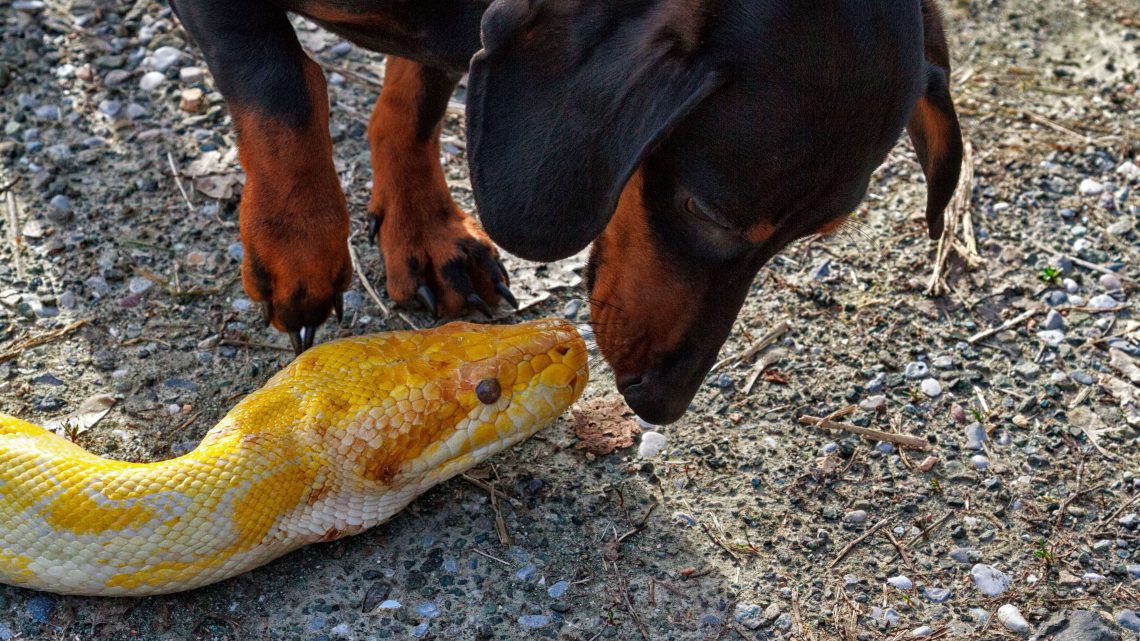
What to do if a dog is bitten by a snake?
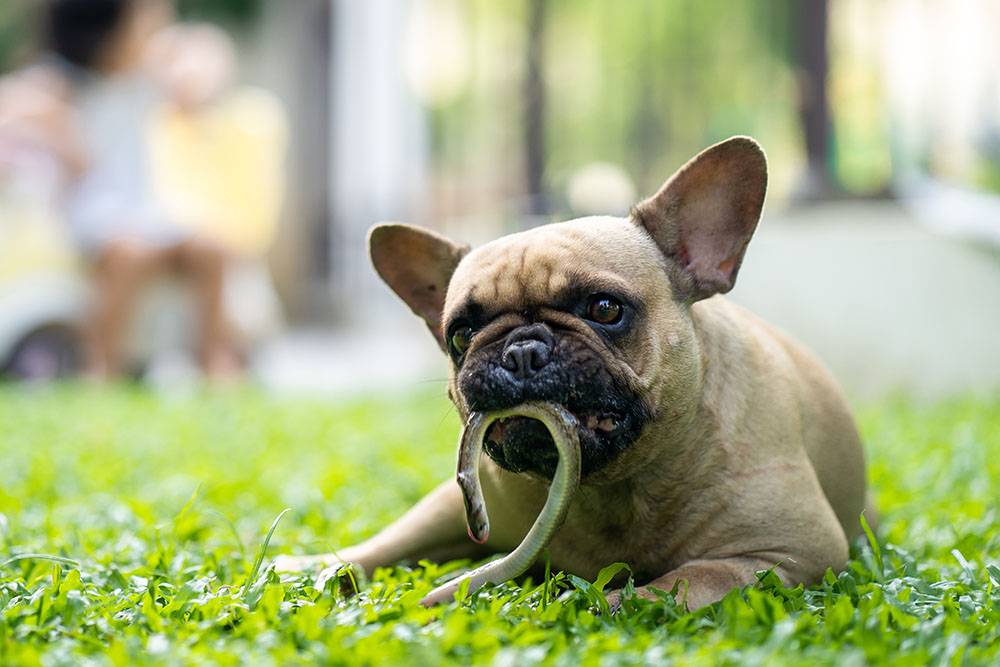
Contents
- Common poisonous snakes in Russia
- Is the bite of a viper and other snakes dangerous for a dog?
- Symptoms of a dog bite by a snake
- What to do if a dog is bitten by a viper – first aid
- Veterinary help
- What can not be done if the dog was bitten by a snake?
- Consequences of snake bites
- How to protect a dog from a bite?
- Answers to frequently asked questions
Common poisonous snakes in Russia
In total, about 90 species of snakes live on the territory of the Russian Federation, of which only 11 are poisonous and dangerous to others. Consider the most common of them.
Viper Convent. Viper is the most common venomous snake in Russia. Its length is on average about 70-85 cm, but in the northern latitudes there are specimens up to 1 meter. Color – gray and dark gray, may have a zigzag pattern on the back. The shape of the head is triangular and wide, reminiscent of a spear.
If a viper has bitten a dog, then the probability of death in case of timely assistance is small.
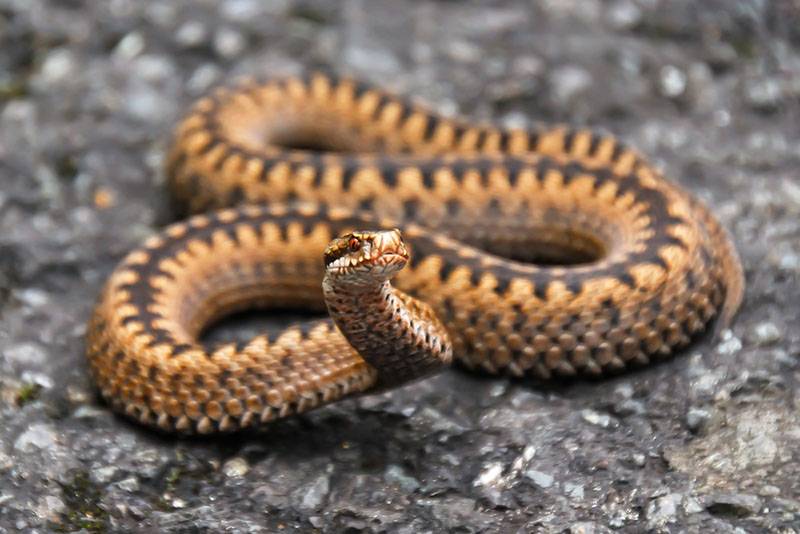
Steppe Viper. This is a gray-brown snake with a dark stripe on the ridge. It is found in the European part of the country, in the North Caucasus, in the Crimea. A bite can lead to the death of an animal in 2-5% of cases.
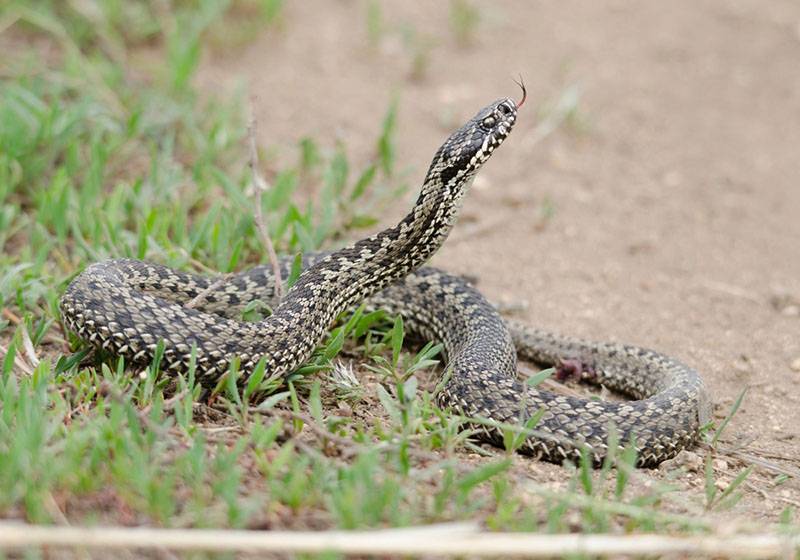
Caucasian viper and Dinnik’s viper. The habitat of these poisonous snake species is the forests of the Western Caucasus and the Alpine belt. Representatives of both species are listed in the Red Book, as they are rare. They have a bright color – red-brick or orange-yellow. The bite is quite painful. Like other types of vipers, the Caucasian does not attack first. Its bite can be fatal for 2-5% of animals.
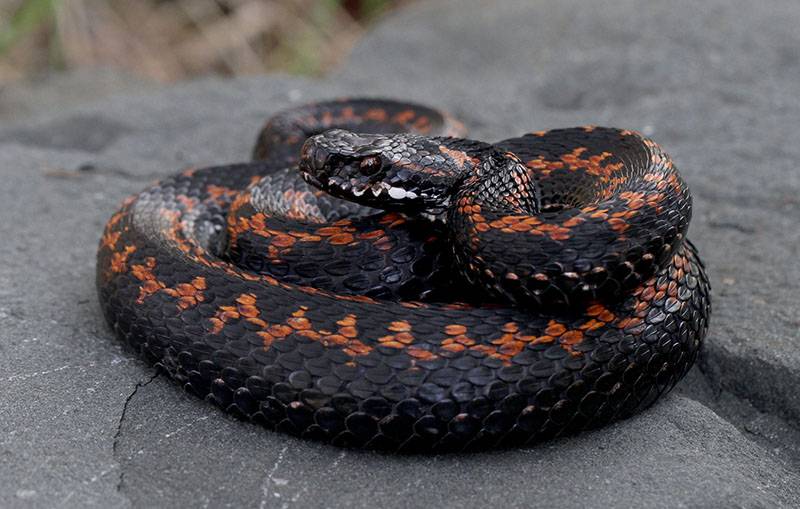
Source: www.clasbio.ru
Shitomordnik. It is a subspecies of the viper. It lives from the Salskaya steppe in the lower reaches of the Don and Volga rivers in the west to the Primorsky Territory in the east. Due to the brown and gray-brown color, it is difficult to see in the bushes. It is active in the spring, when it is time for mating. Aggressive individuals have a strong poison that can be fatal in a bitten animal.
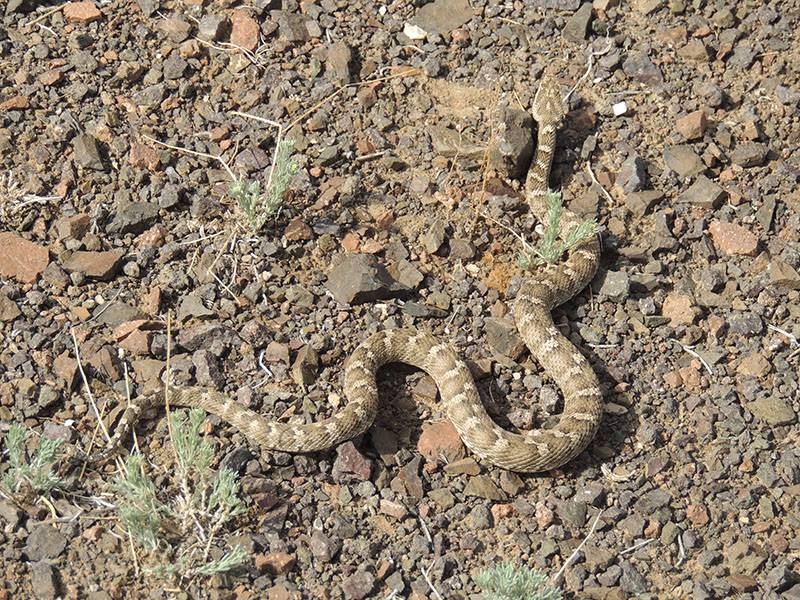
Source: ru.wikipedia.org
Viper. The largest and most venomous snake in the viper family. Lives in the North Caucasus and Dagestan. The appearance of the gyurza is quite impressive: from 1,5 to 2 meters in length and up to 3 kg of weight. Unlike other types of vipers, the gyurza can attack a potential enemy first without warning and does it with lightning speed. It is especially dangerous in the spring, during the mating season. Listed in the Red Book.
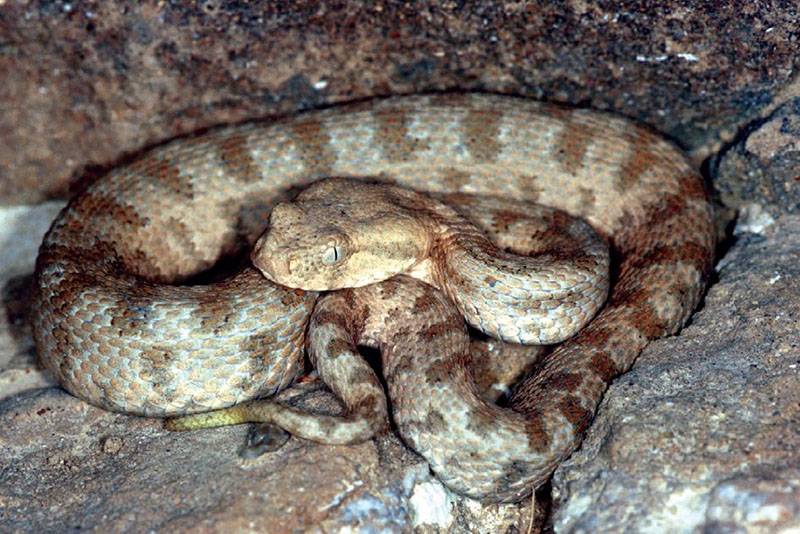
Source: ru.wikipedia.org
Is the bite of a viper and other snakes dangerous for a dog?
The severity of a snake bite depends on the amount of venom injected. Bites in spring and young snakes are more toxic, as more venom is injected. The bite of a very large snake is considered more dangerous, especially in small dogs. Bites to the tongue or neck pose a great threat to life due to progressive edema. Bites to the torso are often more severe than bites to the face or limbs. Dangerous bites
agonizingState of the body prior to death snakes.
Approximately 20% of snake and viper bites are “dry” because they contain little or no venom.
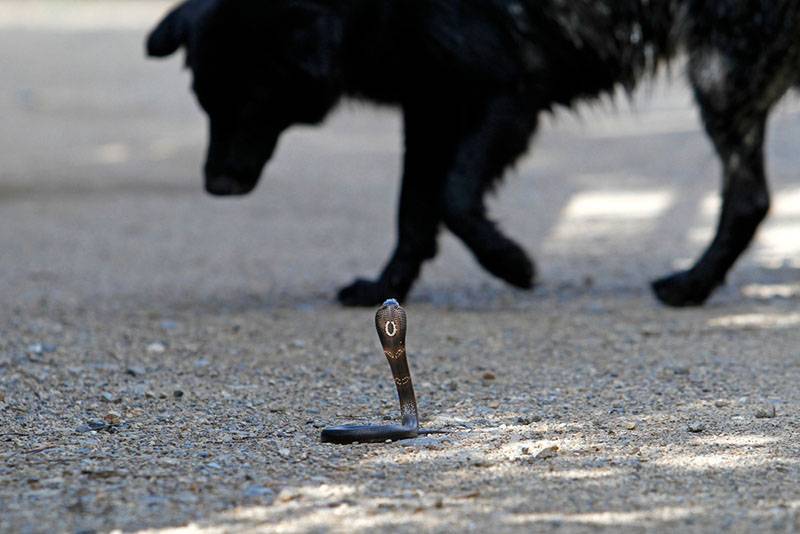
How does poison work?
Snake venom is called ophidiotoxin. The composition of the poison is complex, it is a mixture of albumins, globulins, albumoses, salts of calcium, magnesium, phosphates, chlorides and enzymes.
A common clinical effect of the venom is an immediate reduction in systemic blood pressure due to
vasodilationExpansion of smooth muscle in the walls of blood vessels arteries. The venom of many snakes can cause aggregationAn association platelets and a decrease in their number in the blood, muscle necrosis. Serious complications from large amounts of snakebite venom include ventricular arrhythmias and heart failure, acute renal failure, DIC, and airway obstructionRespiratory tract obstruction syndrome.
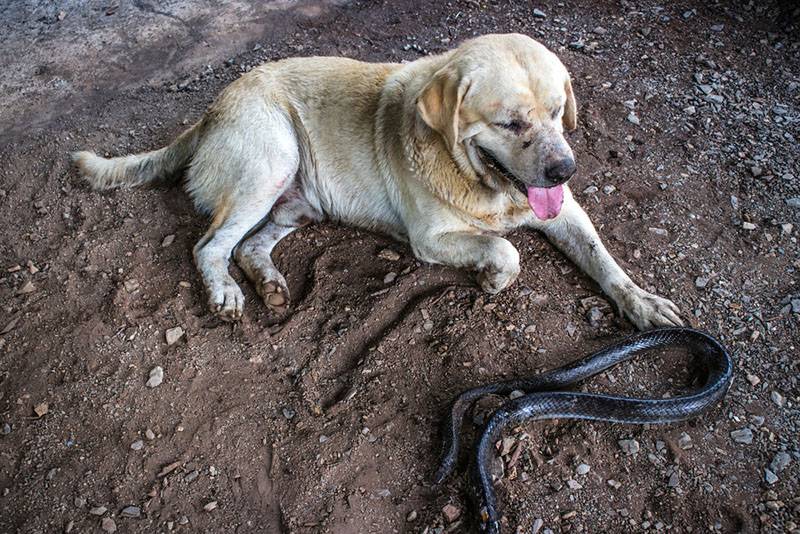
Symptoms of a dog bite by a snake
Clinical signs of a snake bite in dogs are: acute pain and extensive local swelling, enlargement of regional lymph nodes.
In the next 24 hours, diffuse hemorrhages may appear, necrosis of the tissues surrounding the bite site is possible.
Systemic reactions may appear within five minutes or within 48 hours of being bitten. It could be
anaphylaxisInstantaneous hypersensitivity reaction to a foreign substance and its manifestations: weakness, nausea, vomiting, loss of orientation in space, acute hypotensionLowering blood pressure, abdominalPertaining to the stomach pain, urinary and fecal incontinence, fever, tachycardia, arrhythmias, erythemaRedness, respiratory failure.
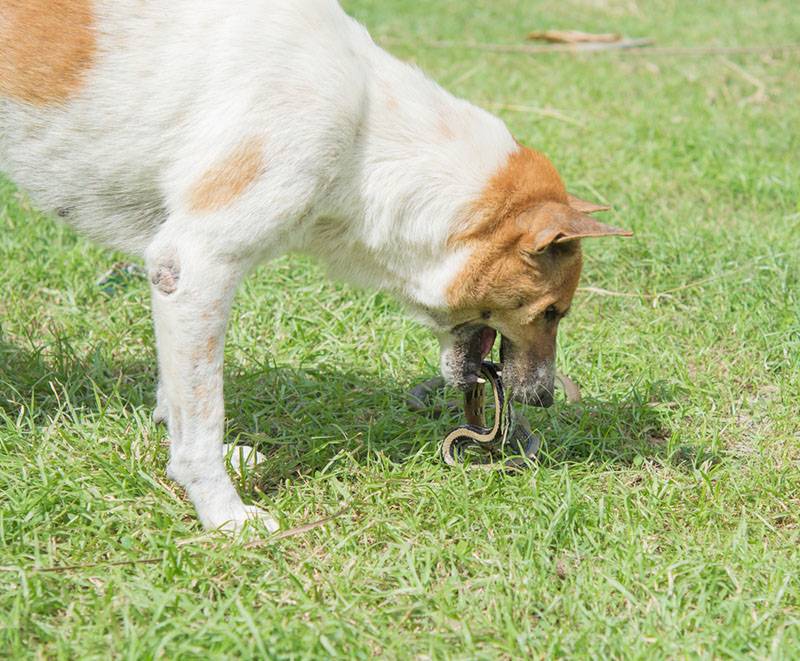
There may also be disturbances in the blood coagulation system up to DIC, the development of bleeding, damage to the heart muscle and kidneys.
Bites to the face or neck lead to more dangerous symptoms, because the rapidly increasing swelling of the tissues in the nose or tongue can cause suffocation with irreversible sad consequences. It is much worse if the poison enters the general circulation – this will lead to a sharp and severe poisoning of the body with a high risk of death.
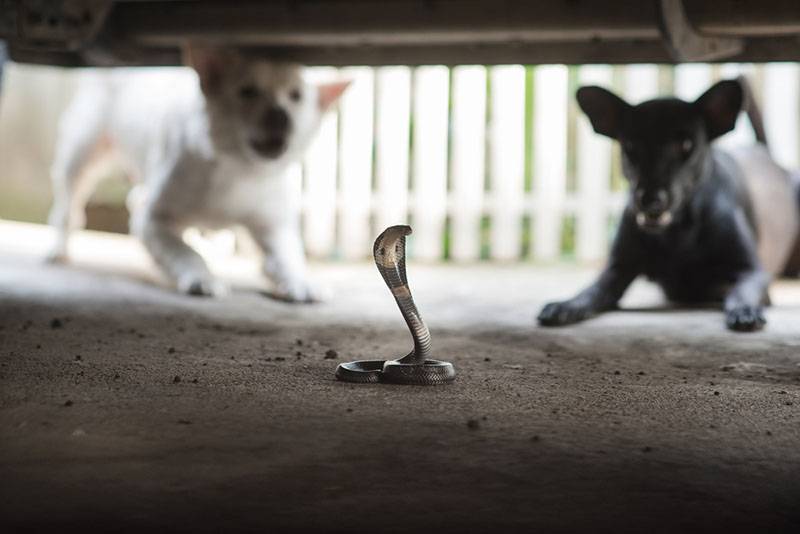
What to do if a dog is bitten by a viper – first aid
It will be better when the owner sees that the dog was bitten by a snake, notices the moment of a fight with a reptile. A pet may attract attention by barking or agitated behavior when encountering a snake. But, unfortunately, the owner does not always immediately notice the very moment of the bite, but only later understands what happened when clinical symptoms appear in the bitten dog. Most often, the viper bites the dog in the head, neck and limbs.
The rate of increase in intoxication is fast, and the dog needs immediate assistance!
So, what to do if the dog was bitten by a snake:
Restrict in movement. The affected dog must be fixed, because increased muscle work accelerates blood circulation and leads to faster movement of the poison through the lymphatic tract. And the outflow
lymphFluid that flows through the lymphatic system from an immobile limb will be less significant. When transporting the dog, it is better to keep it in a supine lateral position.
Apply a cold or ice compress. To prevent swelling and local anesthetic effect, it is recommended to apply ice at the bite site.
Give an antihistamine. An antihistamine may be given to the bitten animal to reduce the chance of an anaphylactic reaction. It can be Suprastin at a dose of 0,5 mg / kg. Try to always keep an antihistamine in your travel and home first aid kit.
Provide the animal with plenty of fluids. It is necessary to give a lot of water to a bitten dog, because a large volume of liquid helps to eliminate the poison from the body.
Deliver to the veterinary clinic. The results of subsequent treatment are affected by the speed of first aid from the moment of the bite and the timely delivery of the animal to the veterinary facility.
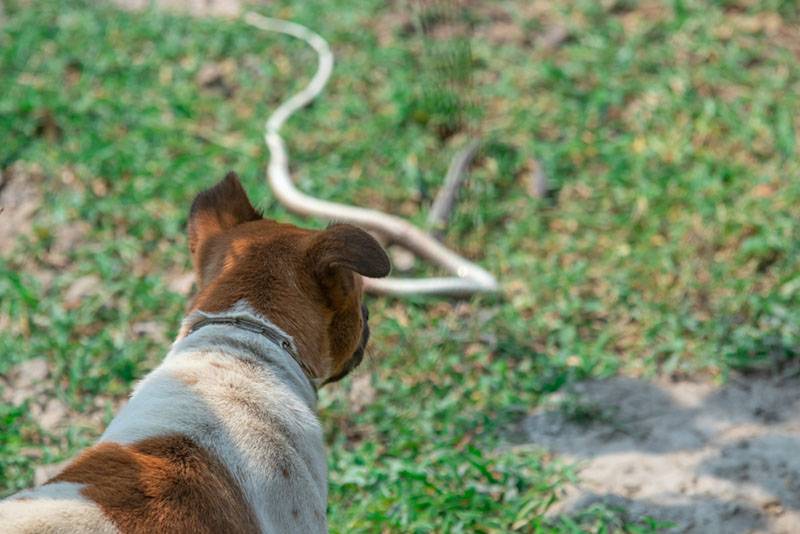
Veterinary help
In a veterinary clinic, if a snakebite is suspected, according to the anamnesis, the patient is treated as an emergency.
Initially, a venous catheter is placed and blood samples are taken. The examination should include general and biochemical blood tests, urinalysis, platelet count and examination of the coagulation system (coagulogram).
The patient is treated on an emergency basis, as a critically ill patient. It is aimed primarily at relieving acute pain, preventing systemic reactions, such as anaphylactic shock, lowering blood pressure. In case of blood loss or development
coagulopathyA condition in which the ability of blood to clot is impaired an urgent need for a blood transfusion.
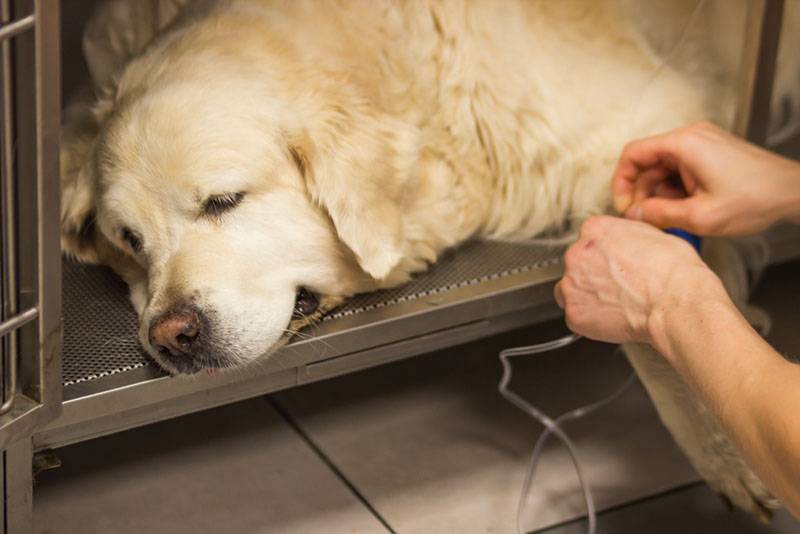
In the absence of contraindications, the introduction
corticosteroidsclass of steroid hormones for quick relief of inflammation and pain relief. The recommended dose is Dexamethasone 0,1 mg/kg IV or Prednisolone 1 mg/kg orally every 12 hours until pain, inflammation, and tissue swelling decrease.
Systemic antibiotic therapy is also needed to reduce the risk of secondary infection. A combination of drugs is recommended, including first and third generation cephalosporins, penicillin, and enrofloxacin. Due to the possible development of acute renal failure in patients bitten by snakes, avoid administering
nephrotoxicKidney toxicity antibiotics.
Monitoring is carried out as in all critically ill patients. Particular attention is paid to the measurement of blood pressure, ECG, diuresis, the state of the blood coagulation system and swelling of the affected area. Swelling in the neck, head, and muzzle can obstruct the airway and thus be life-threatening.
Surgical treatment of the wound is carried out in case of detection of extensive tissue necrosis. Often the tissue in the area of the bite is shed after a few days. Necrotic areas are removed and the cleanliness of the wound is monitored.
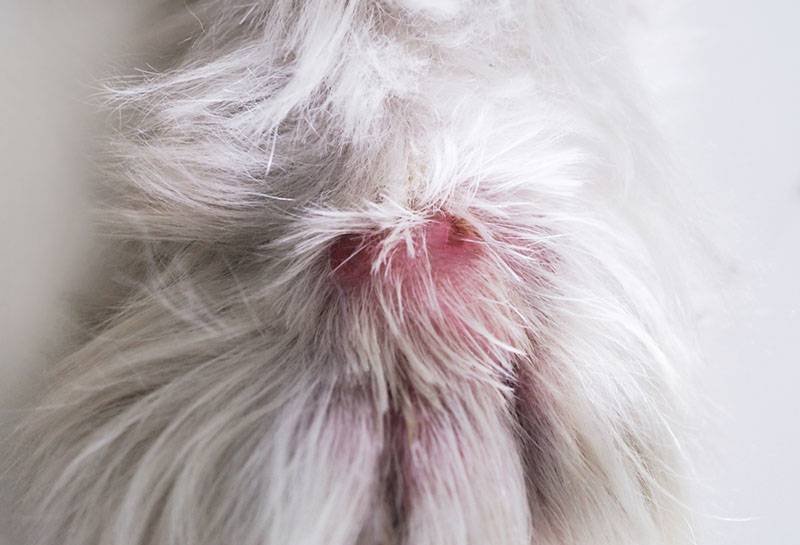
What can not be done if the dog was bitten by a snake?
Cut the skin at the site of the bite! Since the venom acts quickly enough, the incisions do not help, but only an additional injury with the risk of developing a secondary infection.
Treat the wound with alcohol-containing agents! This can speed up the reaction of the poison.
Apply a tight bandage or tourniquet above the bite area! This can impair blood flow in the tissues and lead to necrosis.
Apply traditional medicine! There is no evidence of effectiveness of such remedies for snake bites. This will only be regarded as a waste of precious time to provide assistance.
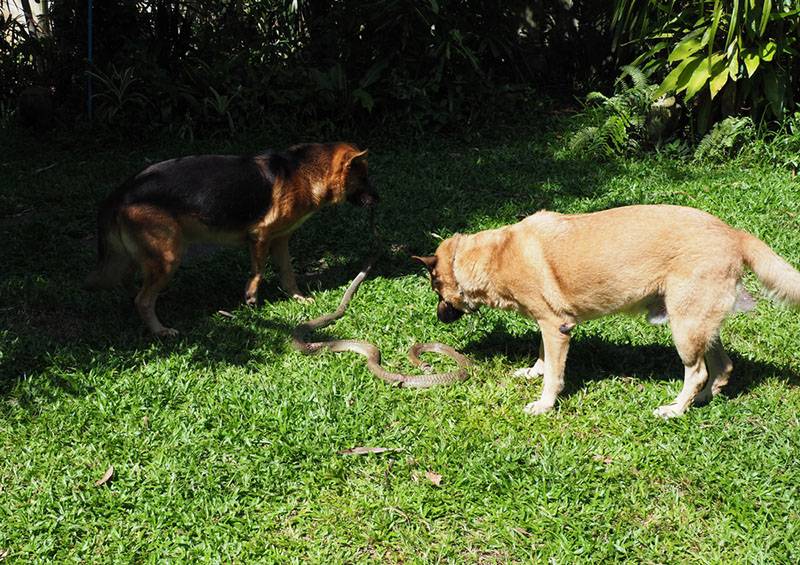
Consequences of snake bites
Snake bites are rarely fatal in large and medium dogs. But for dwarf breeds, for older dogs or dogs with a history of pathologies, the consequences of bites can be severe and even sad.
Breeds that are more sensitive to snake venom include the St. Bernard, German Boxer, Rottweiler, English Bulldog, and American Molossian.
The most resistant breeds of dogs to poison are: hounds, huskies, Caucasian and Central Asian shepherd dogs, spaniels, drathaars, as well as large mestizos. But that doesn’t mean they don’t need veterinary care!
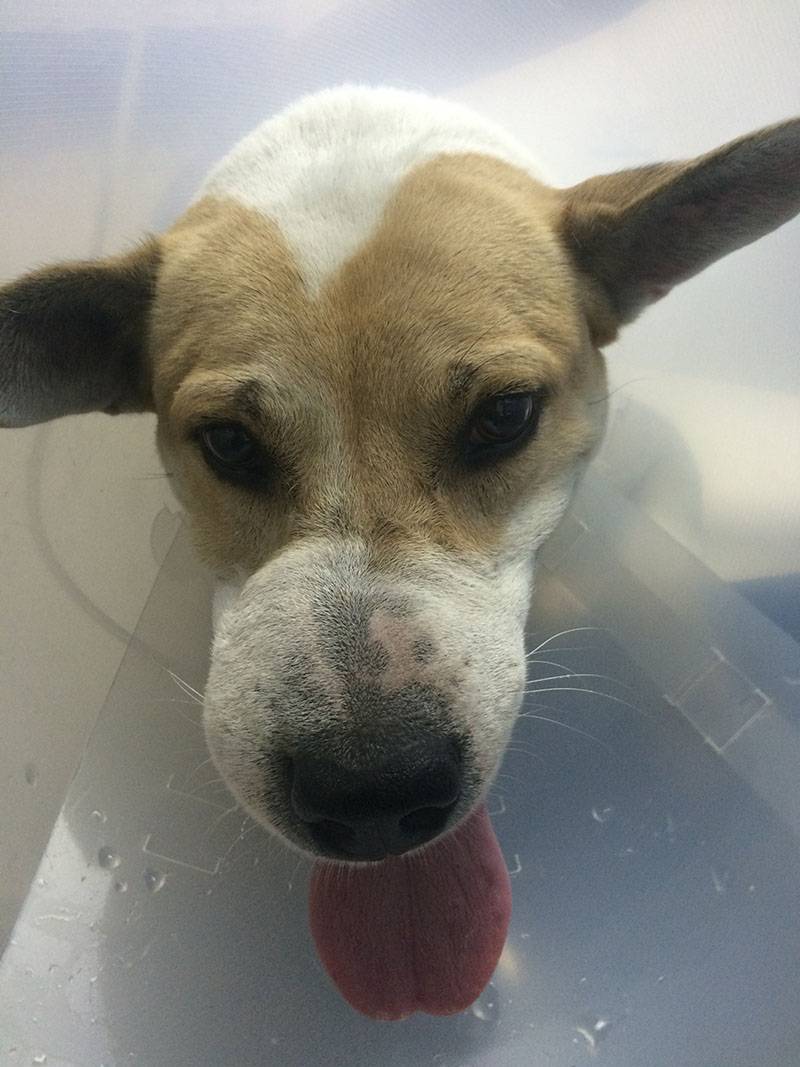
How to protect a dog from a bite?
Unfortunately, there is no universal way to prevent a dog from meeting snakes.
Avoiding an emergency is the main prevention of bites. Walking your dog on a leash will help reduce the risk. Try to bypass old snags and stumps, dense bushes. Keep your pet away from large stones on the shady side, don’t let them break mouse and rat holes. Since there may be snakes hunting rodents nearby. Remember that snakes are active and more aggressive from May to September.
Train your dog to obey commands without question. The dog does not understand the danger of the snake, but reacts to movements, sounds and smells. If you see a snake, command: “Come to me” so that the pet comes up to you and sits next to you. If you see that he is trying to sniff the snake, say the command “Fu” so that the dog runs away from it.
Try to be attentive to changes in the behavior and condition of your dog!
Answers to frequently asked questions
Sources:
D. McIntyre, K. Drobac, W. Saxon, S. Haskinga “Ambulance and small animal intensive care”, 2013
A. A. Stekolnikov, S. V. Starchenkov “Diseases of dogs and cats. Comprehensive Diagnostics and Therapy: Textbook”, 2013
E. A. Dunaev, V. F. Orlova “Snakes. Fauna of Russia. Atlas-determinant”, 2019



